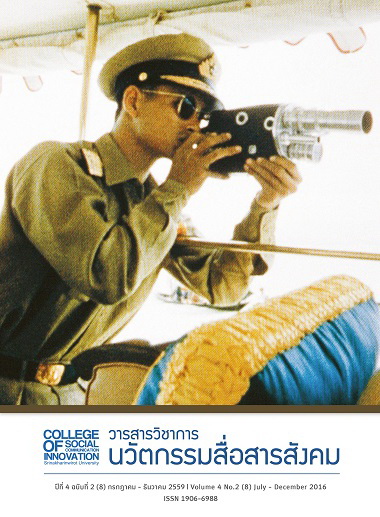ภาพสะท้อนสถานะสตรีต่างสมัยในวรรณกรรมบทละครโน เรื่อง “อิสุท์ซุ”
คำสำคัญ:
บทละครโน, อิสุท์ซุ, อิเสะ, โมะโนะงะตะริ ภาพสะท้อนสตรี, สมัยมุโระมะชิ, สมัยเฮอัน, Noh Play, Izutsu, Ise Monogatari Muromachi period, Heian periodบทคัดย่อ
บทละครโนส่วนใหญ่มักดัดแปลงมาจากวรรณกรรมที่มีชื่อเสียงอยู่เดิมในยุคก่อนหน้า (ก่อนสมัย มุโระมะชิ) โดยเฉพาะวรรณกรรมในสมัยเฮอัน บทละครโนเรื่อง “อิสุท์ซุ” (井筒) เป็นหนึ่งในบทละครโนหลายเรื่องที่ดัดแปลงมาจากวรรณกรรมที่มีชื่อเสียงเดิมอย่าง “อิเสะ โมะโนะงะตะริ” (伊勢物語) ในสมัยเฮอันเช่นกัน ด้วยบทละครโนเรื่อง “อิสุท์ซุ” มีการนำโครงเรื่องเนื้อหาจากวรรณกรรมแหล่งที่มาเดิมมาดัดแปลง ทำให้เนื้อหาส่วนใหญ่มีความใกล้เคียงกับวรรณกรรมแหล่งที่มาเดิม อย่างไรก็ตามจากการเปรียบเทียบวรรณกรรมทั้งสองเรื่องพบว่ายุคสมัยในการประพันธ์ที่ต่างกันทำให้อิทธิพลแนวคิด ทรรศนะ ค่านิยมของสังคมที่ต่างสมัยนี้ ปรากฏเป็นภาพสะท้อนสถานะสตรีที่เป็นตัวละครเอกในเรื่องเดียวกัน ให้มีความแตกต่างกัน กล่าวคือสถานะของตัวละครเอกในฐานะภรรยาที่ต่ำกว่าสามี (บุรุษ) ในวรรณกรรมแหล่งที่มาเดิม ได้รับการดัดแปลงให้รู้สึกว่าทัดเทียมกับบุรุษมากขึ้นในบทละครโน และสถานะในทางพุทธศาสนา ที่ได้รับการดัดแปลงให้สามารถหลุดพ้นจากทุกข์ได้ ต่างจากสตรีในวรรณกรรมแหล่งที่มาเดิมที่ไม่อาจหลุดพ้นจากทุกข์ได้เลย
A Reflection on Woman’s Roles in Different Literary Periods: a Case Study of ‘Izutsu ’ Noh Play
Most of the Noh plays were adapted from famous literatures in the earlier periods (before the Muromachi period), particularly the Heian period. Izutsu (井筒) is one of the Noh plays adapted from renowned Heian literature ‘Ise Monogatari (伊勢物語)’ Izutsu Noh play was adapted a story structure from the original literature. Thus, most of the story is basically similar to the original version. Still, as a result of a comparison between those two works, it illustrates that the different literary periods has an influence on ideas, perspectives and values of society. It notably reflects on different roles of the woman, who is a main character of the story. Based on the original literature, the main character as a wife was lower than a husband (man). However, her role was raised to become more equal with the man in the Noh play. Meanwhile, the role of the woman in the Buddhist perspective was also adapted by allowing the woman to attain a cessation of sadness. This is different from the woman’s role appeared in the original literature which completely could not do it.
ดาวน์โหลด
รูปแบบการอ้างอิง
ฉบับ
ประเภทบทความ
สัญญาอนุญาต
บทความทุกบทความที่ได้รับการตีพิมพ์ถือเป็นลิขสิทธิ์ของวารสารวิชาการนวัตกรรมสื่อสารสังคม มหาวิทยาลัยศรีนครินทรวิโรฒ







